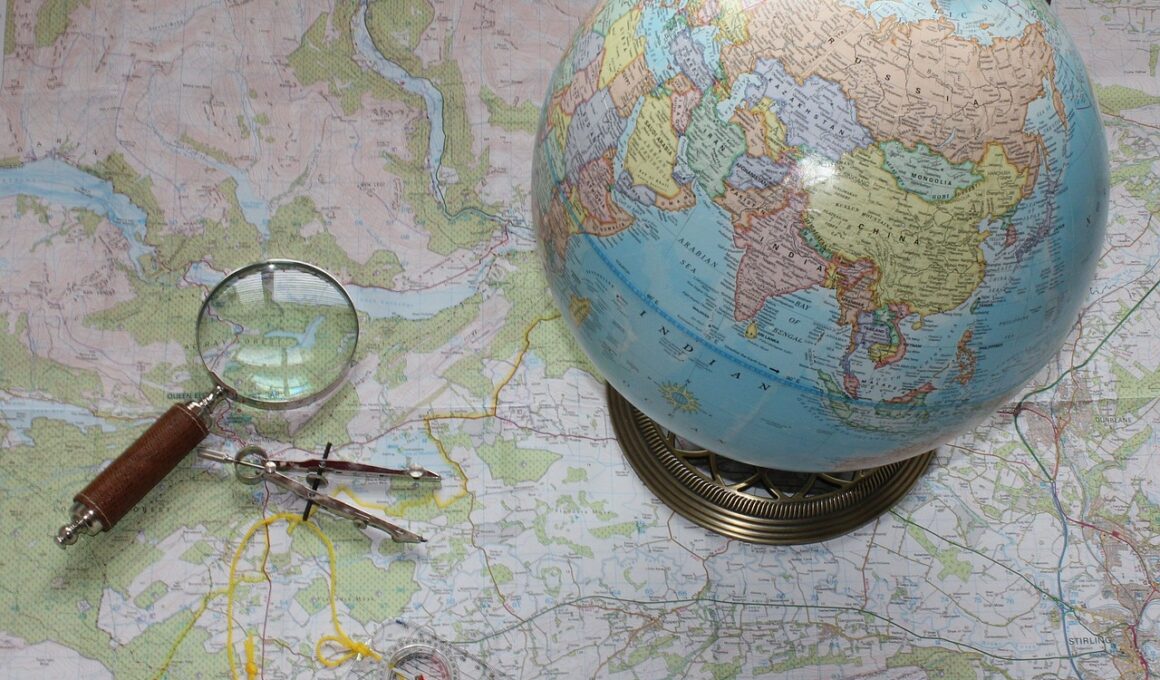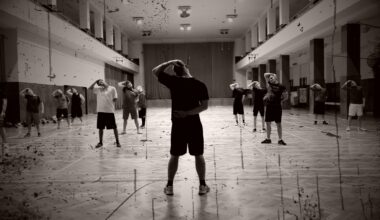Orienteering for Weight Loss: A Fun and Effective Workout
Orienteering is a unique outdoor adventure sport that combines navigation with physical challenges. This engaging activity involves using maps and compasses to find specific locations. It offers a fantastic way to explore diverse terrains, making it not just a sport but an adventure. By participating in orienteering, you can engage your mind while improving your physical health, specifically targeting weight loss. Regular participation enhances cardiovascular fitness, promotes better coordination, and boosts agility, contributing significantly to calorie burning. Orienteering challenges can vary in difficulty and length, ensuring that participants of all skill levels find a suitable event. As you improve your navigation skills, you become more confident, making outdoor activities more enjoyable. The varied environments involved in orienteering allow participants to discover new trails and landscapes, making workouts less monotonous. Additionally, the social aspects of participating in groups or clubs can provide extra motivation. Therefore, if you are seeking a fun way to lose weight and invigorate your fitness routine, orienteering might be your perfect match for an exciting adventure while shedding those pounds!
How Orienteering Aids Weight Loss
Engaging in orienteering can significantly contribute to weight loss due to the high-energy expenditure involved. Each session requires you to run or walk briskly across various terrains, actively engaging your entire body. This aerobic activity boosts your heart rate, resulting in high calorie burn. The mental strain of navigating unfamiliar territory also contributes to your overall workout intensity. Some studies suggest that activities that combine physical exercise with mental challenges, like orienteering, can lead to better weight loss outcomes. Orienteers often cover distances ranging from 2 to 10 kilometers during events, and the more challenging the course, the higher the calorie expenditure. Moreover, enhancing endurance and strength is crucial, both of which are regularly developed through orienteering training. Whether tackling hills, forests, or urban landscapes, participants can enjoy the journey while working towards their weight loss goals. Setting personal milestones and tracking progress is crucial for motivation. This sport creates perfect opportunities to incorporate interval training, which helps in further accelerating weight loss. Ultimately, orienteering effectively marries fun, skill, and fitness in a distinctive outdoor experience!
Beyond physical benefits, orienteering cultivates a deeper connection between participants and nature. Being outdoors enhances mental well-being and reduces stress levels significantly. Immersing yourself in natural setups can amplify the calming effects of exercise, so you will likely enjoy your workouts even more. The dynamic and ever-changing landscapes make each orienteering experience unique and exhilarating. As you engage with the environment, breathing fresh air can lead to better overall health. Concentrating on navigation while moving encourages mindfulness and allows you to escape everyday worries. You can also meet new people, share experiences, and build bonds in outdoor clubs or groups. This sense of community encourages engagement in a supportive atmosphere that can be very beneficial for maintaining motivation. The combination of social interaction and physical activity can lead to improved mental health and overall happiness. By participating in events organized regularly across various locations, you can stay committed to your fitness journey. Thus, orienteering not only assists in achieving weight loss goals but also promotes holistic wellbeing and helps forge lasting friendships.
Essential Gear for Orienteering
To get started with orienteering, having the right gear is crucial for both comfort and safety. A basic checklist includes a sturdy pair of running shoes with good traction, as you’ll be navigating potentially uneven terrain. Lightweight, breathable clothing should be worn to keep you comfortable, allowing for proper movement and ventilation. A reliable map and compass are essential for navigation, helping to hone your skills as you practice. You might also consider investing in an orienteering-specific map holder, allowing you to read your map while staying hands-free. As conditions can vary, consider packing a lightweight rain jacket or extra layers in colder weather to ensure comfort during long events. Hydration is key; carrying a water bottle or hydration pack is important to maintain energy levels throughout your adventure. Additionally, don’t forget a first aid kit for emergencies, as well as snacks to refuel on longer routes. Finally, having a suitable watch can help track your time, allowing you to measure your progress. Proper preparation with the right gear ensures a successful and enjoyable orienteering experience!
To maximize weight loss through orienteering, setting clear goals and planning your training is essential. Determine your desired weight loss target and set a timeline to gauge your progress effectively. Incorporate orienteering practice sessions into your weekly calendar alongside additional workouts such as strength training or cross-training. This balanced approach can help increase your overall fitness, supporting better performance and calorie burn during orienteering events. Be mindful of your nutrition; a well-balanced diet with appropriate portions will complement your engaging exercise routine. Focus on consuming a mix of carbohydrates, proteins, and healthy fats to provide energy and promote recovery. Hydration should not be overlooked, as drinking sufficient water pre- and post-exercise is vital for optimal performance. Listening to your body to avoid overtraining or injury is crucial; thus, schedule rest days to allow for recovery. Monitoring your progress through journaling or apps can enhance motivation, enabling better adherence to your goals. As you achieve personal milestones, reward yourself to maintain enthusiasm and foster ongoing commitment. By following these strategies, orienteering can become a fun, effective tool for achieving weight loss goals!
Joining an Orienteering Community
Connecting with an orienteering community is beneficial at many levels, especially for those aiming for weight loss. Finding local clubs or groups can provide new friendships and enhance motivation through social accountability. Participating in organized events also exposes participants to various terrains and difficulty levels, helping improve skills and performance quickly. Many clubs offer training sessions aimed at beginners, ensuring a welcoming environment for newcomers to learn essential navigation skills. Access to experienced orienteers can provide valuable tips and tricks, accelerating the learning curve and improving overall performance. Moreover, the sense of camaraderie cultivated through group participation fosters a fun atmosphere, transforming the orienteering journey into a more enjoyable experience. Engaging regularly with fellow orienteers creates opportunities for shared challenges and successes, building lasting friendships along the way. Many clubs also engage in fun competitions, making fitness goals achievable through friendly rivalry. Emphasis on teamwork during events fosters bonds and encourages social support that can aid in weight loss motivation. Community involvement can lead to long-term commitment, ultimately transforming orienteering from just a workout into a lifestyle!
Finally, it’s important to remember that orienteering is not just about weight loss but also about enjoying the journey. Keep a positive mindset throughout your orienteering adventures as a healthy attitude towards fitness can make all the difference. Celebrate both small victories and larger milestones, as every step you take contributes to your overall progress. Embrace the learning experience and how much you discover about yourself while solving navigation challenges. As with any sport, progress can ebb and flow, but persistence is key. Staying flexible with your goals is important, as adjusting them to suit evolving interests keeps the activity exciting and enjoyable. Combine orienteering with family outings or social gatherings for added fun, turning exercise into a shared adventure. This approach can help cultivate a love for outdoor exploration while contributing to a healthier lifestyle. Remember, the ultimate aim is to create positive memories and enjoy nature while working towards your fitness goals. By immersing yourself in this vibrant sport, you will not only achieve weight loss but a richer life experience through the beauty of orienteering!



